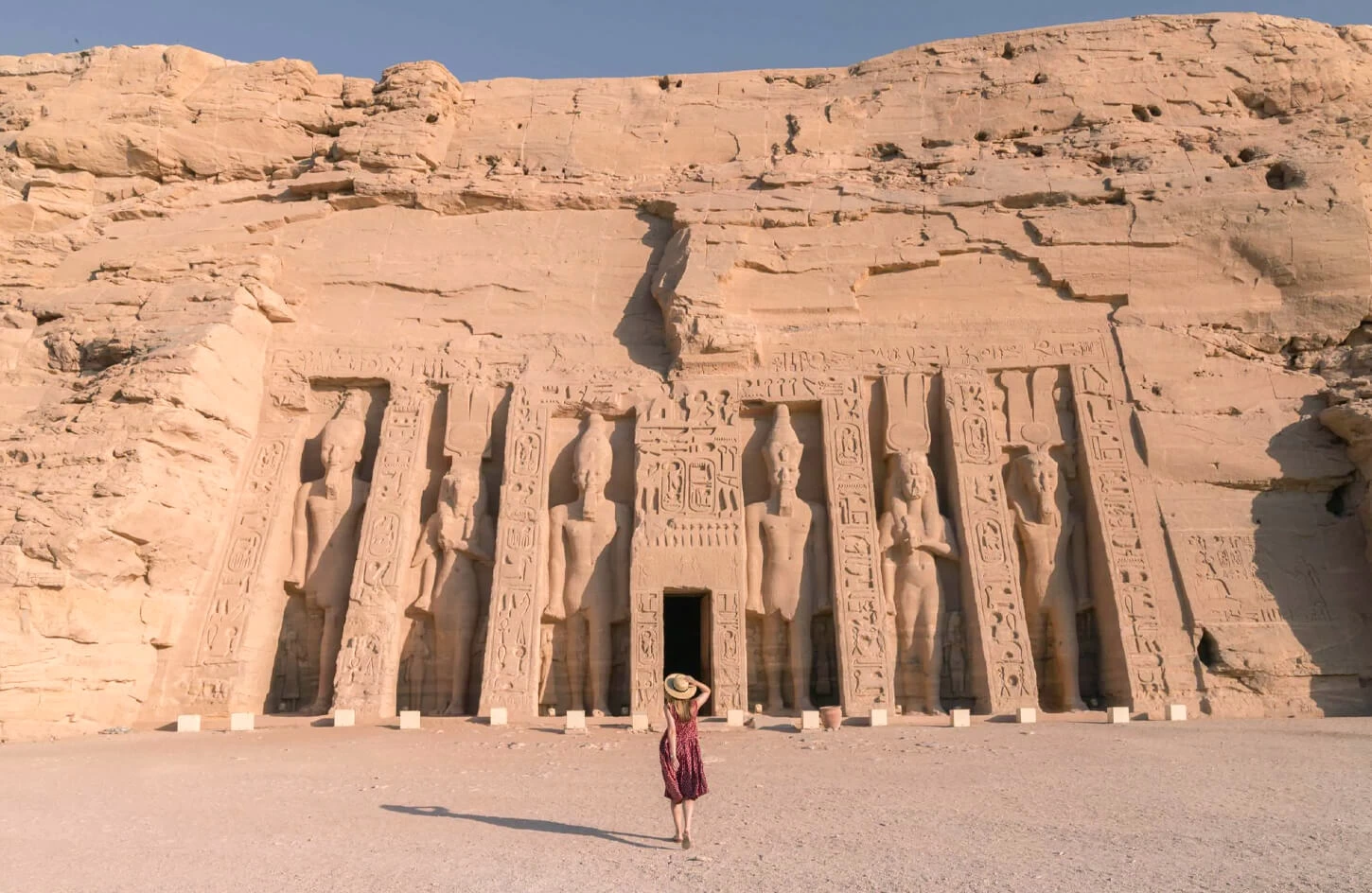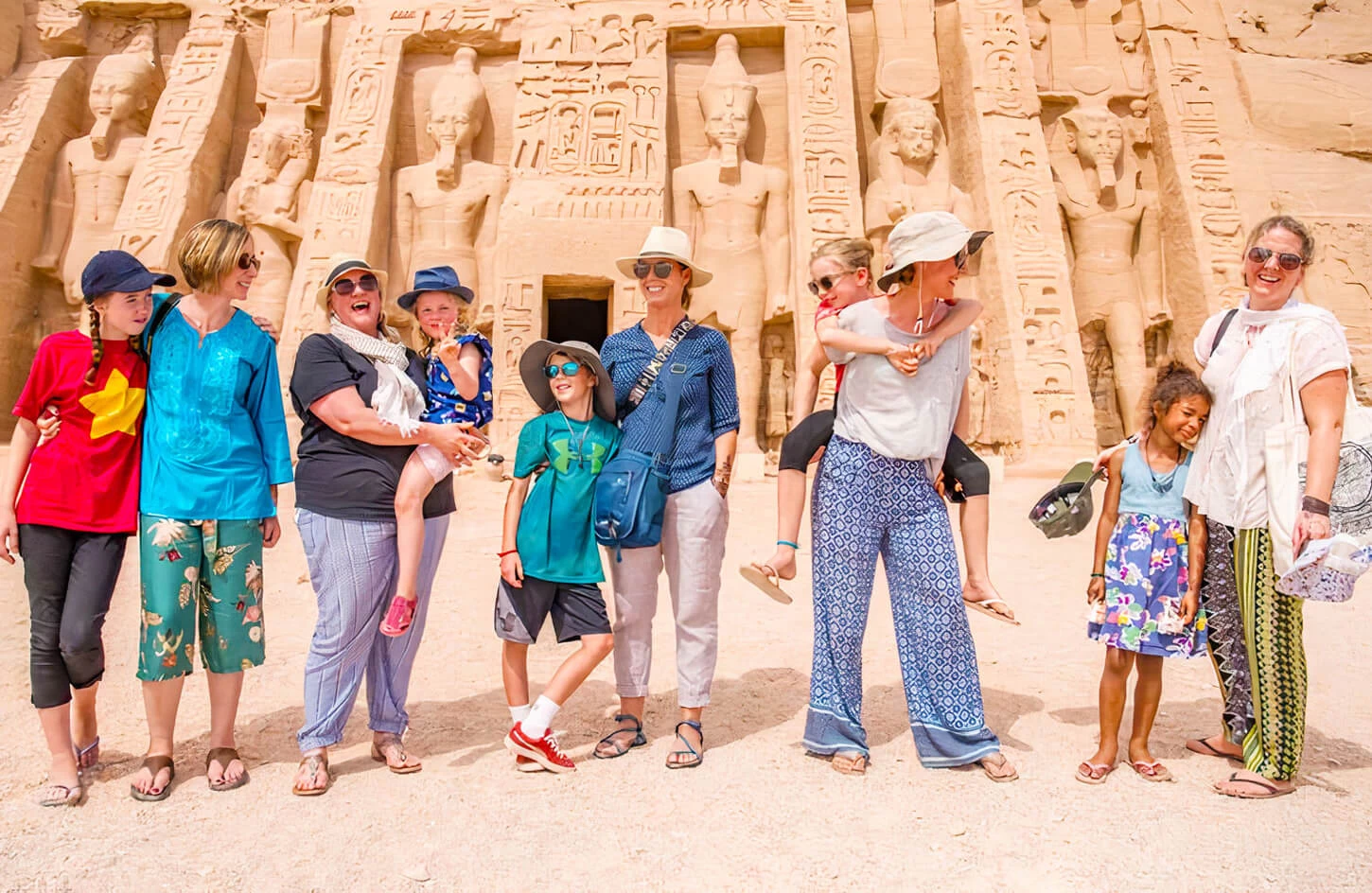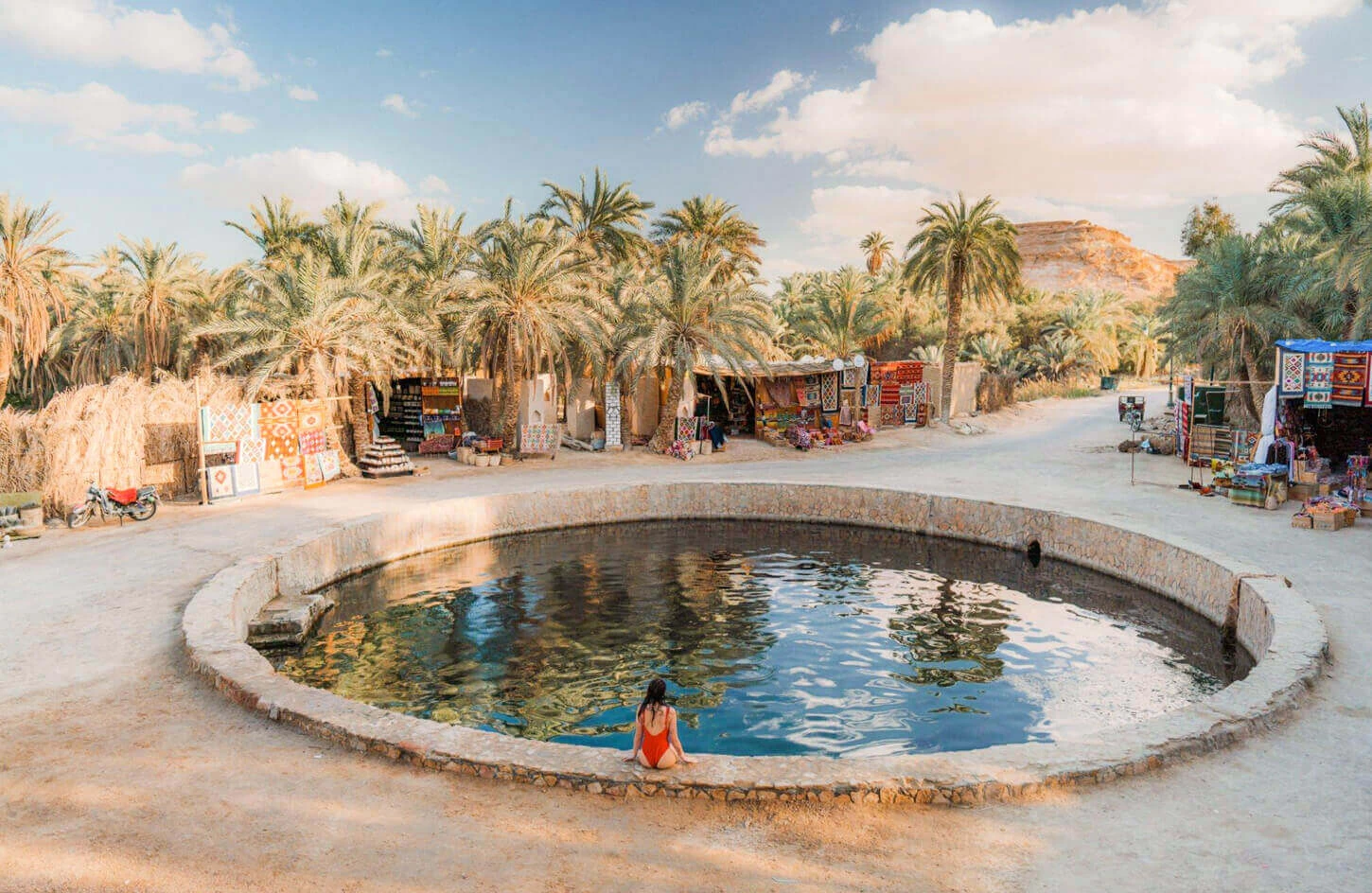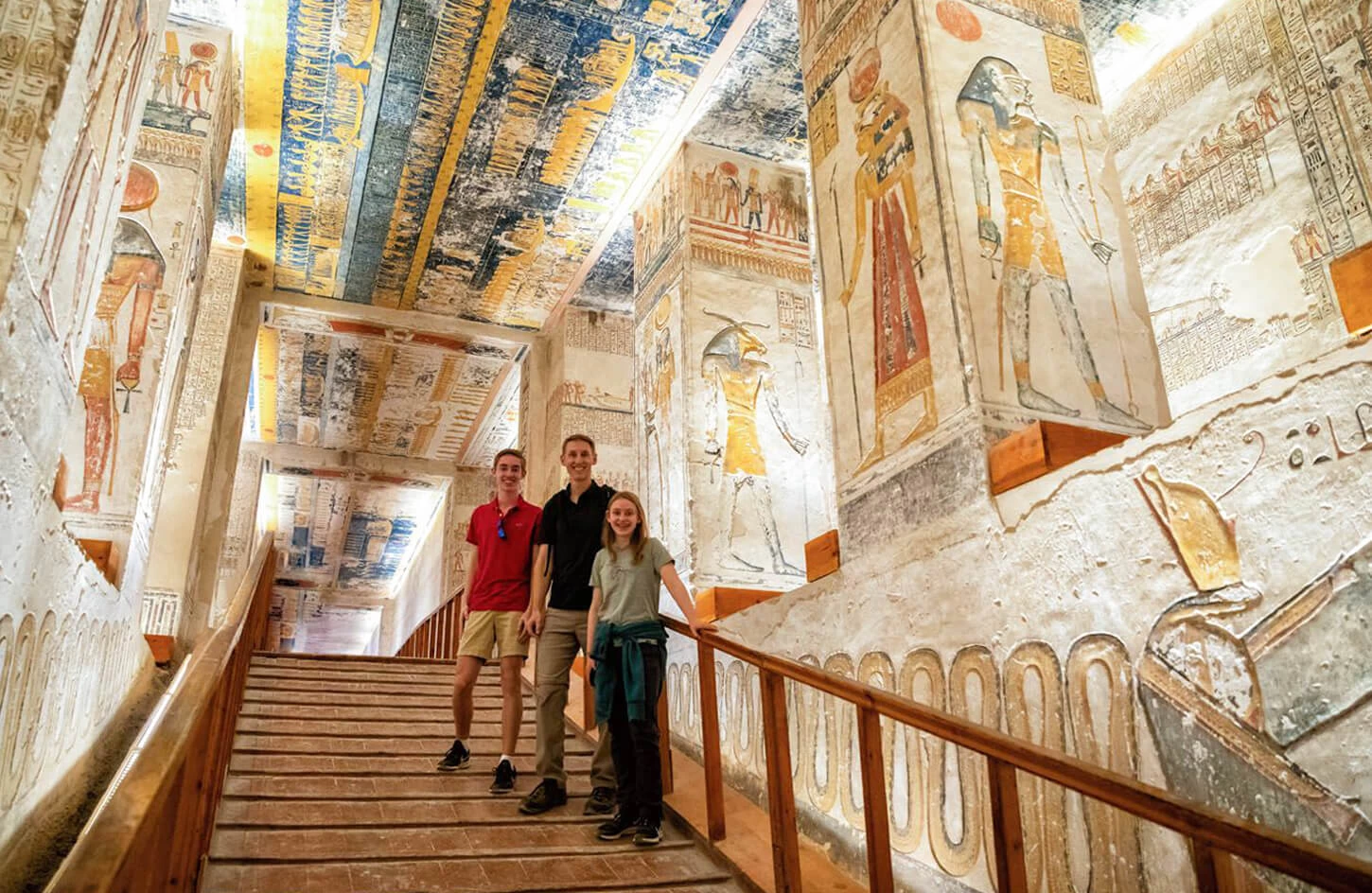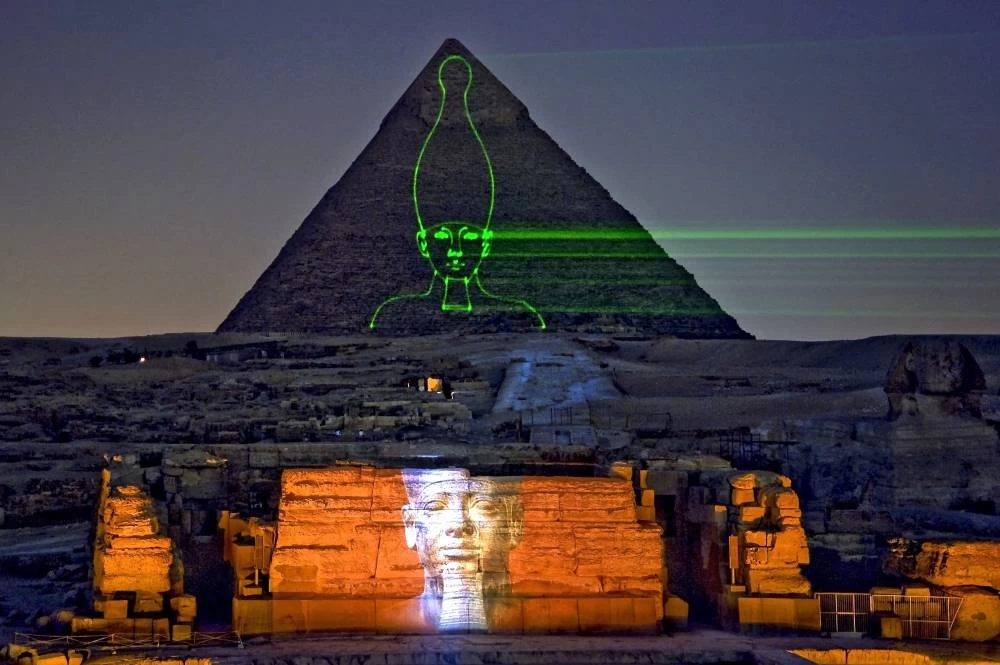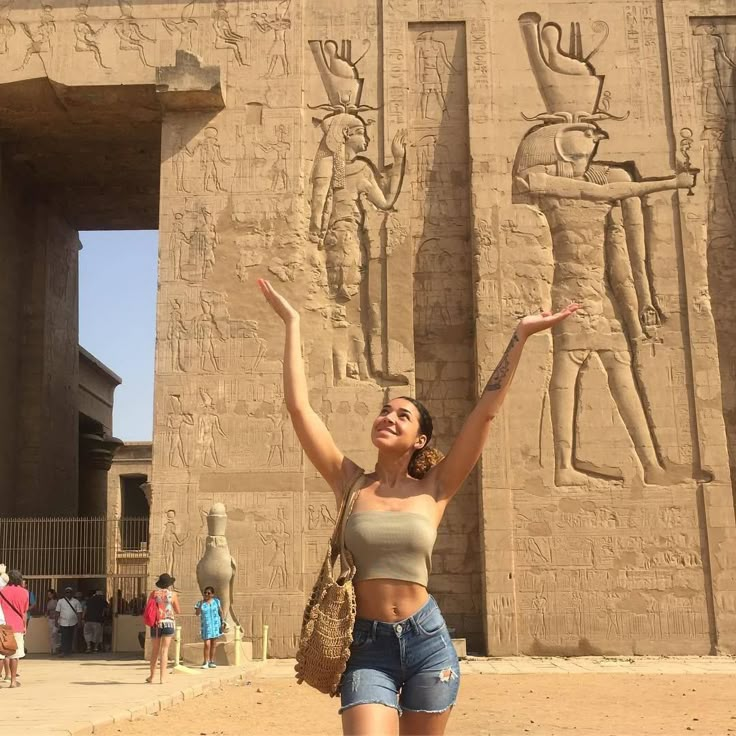The New Kingdom of Egypt
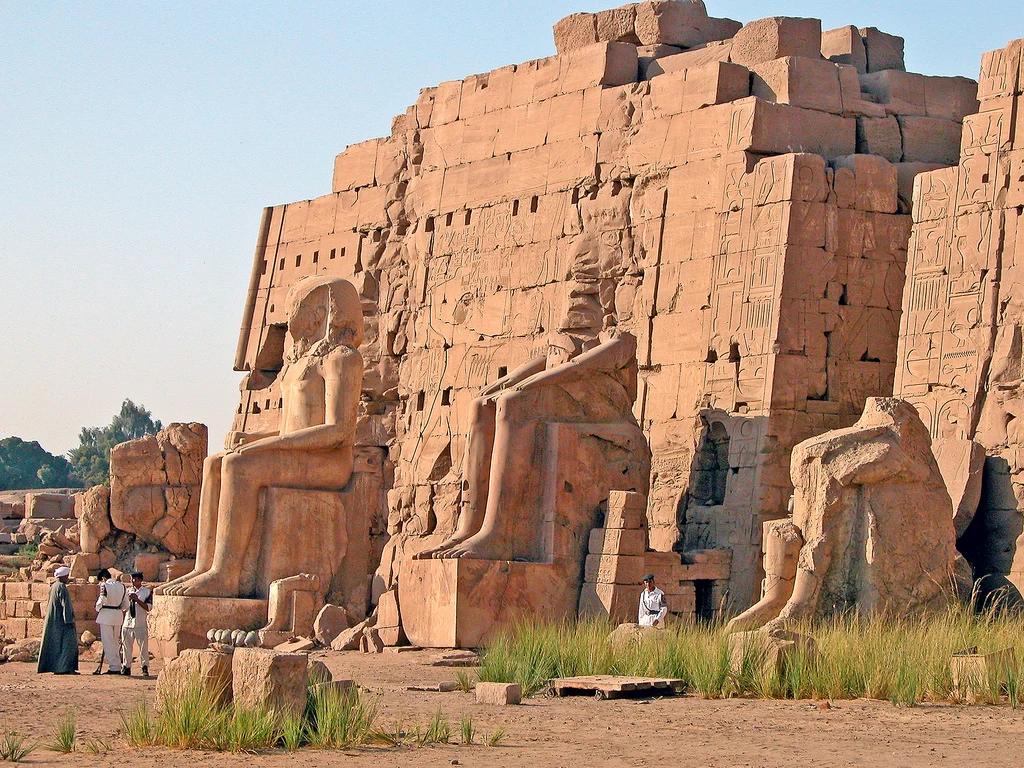
The New Kingdom of Egypt -The Golden Age of Pharaohs
The New Kingdom of Egypt, which lasted from around 1550 BCE to 1070 BCE, has been referred to as the Golden Age of egypt Pharaohs because it was so fantastically successful in war, in the construction of great monuments, in culture, and in wealth. It followed the Middle Kingdom and was one of the most wealthy and powerful periods in Egyptian history.
Some of the most significant facts of the New Kingdom are as follows:
1. Great Pharaohs and Conquests
Thutmose III (r. 1479–1425 BCE), the "Napoleon of Egypt," greatly extended Egyptian lands through conquests in Syria, Palestine, and Nubia.
Amenhotep II (1427–1401 BCE) went on to fight more wars, reinforcing Egypt's hold on the region.
Ramesses II (r. 1279–1213 BCE), or Ramesses the Great, was among the most well-documented and widely known pharaohs of the New Kingdom. His reign was marked by warfare, the construction of enormous monuments like the temples at Abu Simbel, and the first formal peace treaty with the Hittites.
2. Cultural and Architectural Achievements
It was during the New Kingdom that some of the most well-known monuments of Egypt were constructed, including the temples of Karnak and Luxor, the Valley of the Kings, and the temples of Abu Simbel. The monumental structures were constructed to provide praise to deities and make the accomplishments of the pharaohs last long.
Akhenaten (r. 1353–1336 BCE), a powerful pharaoh, initiated religious reform by focusing the cult of the sun god Aten over the earlier polytheistic worship. These periods were also associated with artistic innovation, such as more realistic representations of the reigning dynasty.
3. Religion and Society
The highest god to be worshipped in the New Kingdom was Amun-Ra. The priestly class of Amun dominated much power and, at their height, was influenced under Ramesses III.
The New Kingdom is also famous for constructing enormous mortuary temples and tombs. Pharaohs like Tutankhamun (r. 1332–1323 BCE) were buried in the Valley of the Kings, which was the necropolis of most of the most powerful pharaohs.
4. Economic Prosperity and Trade
Egypt flourished due to its strategic location, which facilitated trade among the Mediterranean, Africa, and Near East. Wealths like gold, wood, and incense were traded with other countries, and Egypt became very rich, leading to trade systems in Egypt flourishing during the reign of Queen Hatshepsut (r. 1479–1458 BCE), who was among the few female pharaohs. Her fabled trade expedition to the country of Punt brought back valuable goods like incense and exotic animals.
5. Decline of the New Kingdom
The latter decades of the New Kingdom suffered a decline in power, with internal conflict and external pressures from the Sea Peoples and other conquerors. Centralized decay, corruption, and economic pressure caused Egypt's ultimate breakdown.
By the end of the 20th Dynasty, Egypt was not as great as it had once been and eventually fell under foreign domination by such peoples as the Libyans, Nubians, and Assyrians.
Notable New Kingdom Persons:
Hatshepsut: Perhaps Egypt's most prosperous pharaoh, known for her expeditions to conduct trade and build massive monuments.
Akhenaten: Pharaoh who attempted to overthrow Egypt's religion, focusing on the worship of the sun god Aten.
Tutankhamun: The famous "boy king" whose tomb was found in 1922 and told us much about the era.
Cleopatra VII: Not part of the New Kingdom, her reign during the Ptolemaic era after the New Kingdom was a closing chapter on Egypt's dynastic period.
The New Kingdom had a lasting legacy in Egyptian history and culture since its deep contribution to religion, government, art, and architecture remains driving fascination and interest until the present time.
How the New Kingdom Shaped Ancient Egyptian History
The New Kingdom (c. 1550–1070 BCE) is generally considered the peak of ancient Egyptian civilization. It was a period of unparalleled power, prosperity, and dominance in Egyptian history, which shaped the culture, politics, and legacy of Egypt for centuries. The following are the main ways the New Kingdom impacted ancient Egyptian history:
1. Egypt's Expansion of Empire:
Egypt was an ancient world power during the New Kingdom. Pharaohs conducted military campaigns to expand Egyptian territories outside Egypt's ancient borders. These were:
Conquering Nubia (the southern region) for its wealth, especially gold.
Militarily campaigning in the Levant (northeast) to secure trade routes and control of the Levant.
With Pharaohs like Thutmose III and Amenhotep II, Egypt extended its borders to the contemporary states of Israel, Syria, and Iraq and became imperial in character.
2. Cultural, Architectural, and Artistic Flourishing:
The New Kingdom witnessed the greatest visited monuments constructed and flourishing of its artistic and cultural achievement:
Temple construction: Pharaohs Ramses II and Hatshepsut ordered the construction of magnificent temples like the Temple of Karnak and Abu Simbel.
Valley of the Kings tombs: Pyramid tombs were abandoned by the New Kingdom pharaohs as royal tombs gained favor among the Valley of the Kings, and resorted to secret burial places, which have yielded some of the greatest archaeological discoveries, like King Tutankhamun's tomb.
Art: The art of that period was extremely advanced with elaborate colors, delicate statues, and the Amarna style characterized by Akhenaten, where people were drawn in a more realistic manner.
3. Religious Transformation:
The New Kingdom was an era of sweeping religious transformation.
Amun-Ra's Dominance: Amun the deity became Egyptian religion's focal god, especially during the reign of Pharaohs like Hatshepsut and Ramses II, with the Temple of Karnak as its main religious center.
Amenhotep IV (Akhenaten) and the Rise of Aten: Akhenaten promoted a radical religious reform by spreading the cult of Aten, the sun disk, at the expense of the other gods. This is one of the most turbulent periods in Egyptian history, and Akhenaten's reforms were reversed after his death.
Restoration of Tutankhamun: The young Pharaoh Tutankhamun reinstated the old polytheistic faith, such as the cult of Amun.
4. Administrative and Political Reforms:
The New Kingdom also witnessed the emergence of a more sophisticated political and administrative structure:
Centralized Bureaucracy: The pharaoh's power became centralized, and the state was more bureaucratic, with governors governing distant provinces of the empire.
Diplomacy and Foreign Relations: Egypt maintained diplomatic relations with other great powers, such as the Hittites, Mitanni, and Babylonians, and gave rise to the exchange of marriages, treaties, and trade.
5. Decline of the New Kingdom:
Despite being great, the New Kingdom eventually fell because of the following:
Internal Strife: As pharaohs became weaker, there were power struggles from within, and the upper class began to gain more power.
Economic Strains: The cost of maintaining such a vast empire, with constant wars, drained Egypt's Treasury.
External Pressure: The Sea Peoples invaded and assaulted the later New Kingdom and destabilized the region.
Gradual Collapse: The breakdown of centralized rule and the installation of regional governors, or nomarchs, caused Egypt to gradually dissolve into weaker, smaller kingdoms in the Third Intermediate Period.
6. Legacy of the New Kingdom :
Cultural Influence: The New Kingdom laid the foundation of a great deal of Egyptian culture, including religious life, royal iconography, and monumental buildings.
Historical Legacy: The extensive foreign and military campaigns of the New Kingdom had a lasting legacy on the ancient Near Eastern culture. The Egyptian presence at the time extended to touch many of the neighboring cultures and helped to make a contribution to cross-cultural exchange that characterized the Mediterranean world.
Popularization of the Pharaoh: The New Kingdom established the pharaoh as the divine ruler, a role that would go on to shape Egyptian identity for centuries.
Briefly, the New Kingdom influenced the path of Egyptian history by transforming Egypt into an imperial power, bringing cultural and religious innovations, and establishing the basis of its far-reaching impact on generations to come.
Key Pharaohs of the New Kingdom
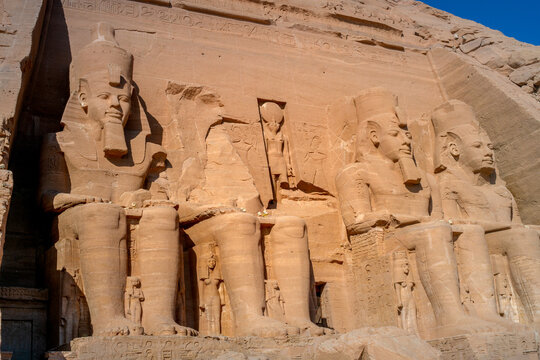
The New Kingdom of Egypt (c. 1550–1070 BCE) was home to several of the greatest major pharaohs who contributed to Egypt's establishment as a dominant power, legacy, and culture. Some of the most prominent successful pharaohs of this period are:
1. Ahmose I (c. 1550–1525 BCE)
Major Accomplishments: Ahmose I is said to have expelled the Hyksos invaders from Egypt, thereby initiating the New Kingdom. His campaigns laid the foundation for Egypt's prosperity and expansion in the future.
2. Hatshepsut (c. 1479–1458 BCE)
Major Achievements: One of the few female pharaohs, Hatshepsut is best known for her peaceful reign, focusing on trade and grand architecture. She expanded Egypt's commercial connections, particularly to Punt (modern-day Somalia), and commissioned the stunning Temple of Deir el-Bahari.
3. Thutmose III (c. 1479–1425 BCE)
Major Accomplishments: He was the "Napoleon of Egypt," and he constructed Egypt's empire to its broadest reach with Levant and Nubian conquests. His reign was Egypt's greatest imperial height and preeminence in the ancient world.
4. Amenhotep II (c. 1427–1401 BCE)
Key Accomplishments: A successful military leader, Amenhotep II won successful Near Eastern and Nubian campaigns. He also started large construction projects, including the Temple of Karnak.
5. Akhenaten (c. 1353–1336 BCE)
Key Achievements: Akhenaten is best known for his religious revolution, in which he founded the cult of Aten, the sun disk, at the expense of the traditional pantheon of gods. His reign was the brief era of monotheism in Egypt, and he moved the capital to Akhetaten (modern Amarna). His reforms were largely undone after his death.
6. Tutankhamun (c. 1332–1323 BCE)
Major Achievements: Tutankhamun is perhaps best known for his almost fully preserved tomb, which was unearthed by Howard Carter in 1922. Even if he took up the throne when he was just a teenager, his reign saw the resurgence of the ancient religious rituals that Akhenaten had toppled, such as the cult of Amun.
7. Seti I (c. 1290–1279 BCE)
Major Accomplishments: Seti I is recalled for his campaigns in the Levant and Nubia and for restoring Egypt's power. He also ordered the construction of several temples, most notably the Temple of Abydos.
8. Ramses II (c. 1279–1213 BCE)
Major Achievements: Ramses the Great, so he is named, is for the most part Egypt's greatest and best-known pharaoh. He ruled for 66 years, fighting wars of war campaigns, e.g., the Battle of Kadesh against the Hittites. Ramses II is also renowned for his architectural projects, including the huge temples at Abu Simbel and his extensive work at Karnak.
9. Merneptah (c. 1213–1203 BCE)
Notable Achievements: Merneptah, son of Ramses II, is recalled through his military campaigns, particularly in Libya and the Levant. His Victory Stele is famous for having the earliest known reference to Israel in Egyptian records.
10. Ramses III (c. 1186–1155 BCE)
Key Achievements: Ramses III is considered to be the last great pharaoh of the New Kingdom. He protected Egypt from invasion by Sea Peoples and ensured its continued prosperity during his reign, though the second half of his reign was troubled by internal strife and declining royal power.
All of these pharaohs participated in the military, religious, and cultural expansion of Egypt in the New Kingdom, and together their legacy contributed to it becoming one of the greatest ancient civilizations.
The Rise and Fall of Egypt’s New Kingdom
The Rise and Fall of Egypt's New Kingdom (c. 1550–1070 BCE)
The New Kingdom of Egypt (c. 1550–1070 BCE) is the zenith of Egypt's power and influence, an age of military conquest, cultural attainment, and monumental construction. Its rise was, however, followed by a gradual decline due to internal instability, economic adversity, and foreign invasions. Here is an overview of the rise and fall of Egypt's New Kingdom:
The Rise of the New Kingdom:
The Expulsion of the Hyksos (c. 1550 BCE)
The New Kingdom began with the overthrow of the Hyksos, a foreign Semitic people who had ruled northern Egypt during the Second Intermediate Period. Ahmose I, a pharaoh from Thebes, successfully expelled the Hyksos and reunified Egypt around 1550 BCE. This victory laid the foundation for the New Kingdom’s rise as a powerful, centralized state.
Military Expansion and Empire Building
Under Ahmose I and his successors, Egypt embarked on a series of conquests that brought its borders well beyond ancient frontiers. The New Kingdom pharaohs, particularly Thutmose III (c. 1479–1425 BCE), fought successful wars of conquest into the Levant, Nubia, and Syria, turning Egypt into an empire. Thutmose III's campaigns brought wealth, resources, and prestige into Egypt, turning it into one of the greatest powers of the ancient world.
Cultural and Economic Prosperity
The wealth of wars facilitated colossal development in religion, architecture, and art. Pharaohs like Hatshepsut (c. 1479–1458 BCE), Amenhotep II, and Ramses II (Ramses the Great) spent on monumental building projects, like the Temple of Karnak, the Temple of Abu Simbel, and ornate tombs in the Valley of the Kings. Egypt also became a trade center of incalculable significance, gaining valuable resources like wood, gold, and ivory from surrounding regions.
Religious and Cultural Changes
The New Kingdom witnessed monumental religious transformations. Amun became the chief deity, and Thebes became important as the site of religious matters. During the reign of Akhenaten (c. 1353–1336 BCE), Egypt temporarily became monolithic with an emphasis on the worship of the god Aten in the sun, though this reverted to its multigod original form after his death. New Kingdom witnessed sophisticated art, writing, and spirituality that contributed to Egypt's enduring fame.
The Fall of the New Kingdom:
Weakening of Pharaoh's Authority
After Ramses II, Egypt began to experience political instability. The central authority of the pharaoh began to decline, and regional governors (nomarchs) gained greater influence. Decentralization led to a decline in control of Egypt's vast lands and weakening of military power.
Economic Burden
The conquest wars and massive construction works by previous pharaohs exhausted Egypt's resources. Also, agricultural production began to decline, and trade routes became insecure with external threats and invasions. The economic strain contributed to internal unrest and seriously impaired the state's ability of maintaining its empire.
Foreign Invasions and Internal Conflict
Egypt was invaded by the Sea Peoples during the rule of Ramses III (c. 1186–1155 BCE). The Sea Peoples invaded Egypt's Mediterranean coastline, causing widespread devastation. Though Ramses III drove out the invaders, Egypt's military and economic power had been greatly weakened. Internal conflicts, including palace politics and corruption among officials, also led to the weakening of the kingdom.
Decline of Military Power and Loss of Territories
At the close of the New Kingdom, Egypt's power as a military force had waned. Nubian and Levantine lands were surrendered to hostile foreigners, and Egypt was more and more threatened by the surrounding powers like the Libyans, Nubians, and the Assyrians. The old great empire had reduced to a shadow of itself, and Egypt was no longer the superpower of yore.
The Third Intermediate Period (c. 1070 BCE and Later)
Following the death of Ramses XI, Egypt slipped into the Third Intermediate Period, a time of instability and disunity. Egypt was divided into competing regions, with power moving between local governors, and Egypt's political unity was lost. Lacking a central authority, Egypt came under foreign influence, first with the Libyans and then the Persians.
Facts About the New Kingdom of Egypt
The New Kingdom of Egypt (c. 1550–1070 BCE) was the height of ancient Egyptian civilization, characterized by conquest through war, prosperity, and monumental construction. The following are some significant facts about the New Kingdom:
Foundation of the New Kingdom
The New Kingdom began with the expulsion of foreign leaders Hyksos by Ahmose I in 1550 BCE. This marked the end of the Second Intermediate Period and the start of a new era of Egypt's military and political dominance.
Major Pharaohs
Hatshepsut (c. 1479–1458 BCE): One of the few female pharaohs, she is famous for her profitable trade expeditions, particularly to Punt, and for constructing monumental buildings like her mortuary temple at Deir el-Bahari.
Thutmose III (c. 1479–1425 BCE): The "Napoleon of Egypt," he expanded Egypt's empire to its territorial high point, covering parts of modern-day Syria, Israel, and Sudan.
Akhenaten (c. 1353–1336 BCE): He established a brief period of religious reform, promoting the sun god Aten and attempting to replace Egypt's polytheistic system with monotheism. This period is known as the Amarna Revolution.
Tutankhamun (c. 1332–1323 BCE): Best known for the discovery of his tomb in 1922, Tutankhamun was pharaoh from an early age and is known for restoring the old religious customs after Akhenaten's reforms.
Ramses II (c. 1279–1213 BCE): Ramses the Great, ruling for 66 years, fought the great Battle of Kadesh against the Hittites, and built monumental structures such as the temples at Abu Simbel.
Territorial Expansion
The New Kingdom saw Egypt expand to become an empire. Thutmose III and later pharaohs expanded Egypt's boundaries into Nubia (southern Sudan), Syria, and the Levant, and Egypt emerged as a prominent nation in the ancient world.
The Capital at Thebes
Thebes (Luxor today) was the capital of Egypt during the New Kingdom. It was a center of power, culture, and religion, and home to the Karnak Temple Complex, one of the largest religious complexes ever built.
Architectural Achievements
The New Kingdom saw the construction of some of Egypt's most celebrated monuments, including:
The Temple of Karnak: The world's largest religious building, which was dedicated to the god Amun.
The Mortuary Temple of Hatshepsut: An enormous temple built by Hatshepsut at Deir el-Bahari.
Pyramids of the New Kingdom: While less enormous than Old Kingdom ones, many pharaohs built elaborate tombs inside the Valley of the Kings.
Religious Reforms
Akhenaten's Reforms: Akhenaten redirected Egypt's religious focus on the cult of Aten, sun disk, in opposition to Egypt's traditional polytheism. His successor Tutankhamun restored the traditional cult of the god Amun after his death.
Military Campaigns
The New Kingdom is known for its military might. Ramses II’s campaigns against the Hittites and his famous victory at the Battle of Kadesh (c. 1274 BCE) helped secure Egypt’s dominance. The battle, however, ended in a stalemate, leading to the first known peace treaty in history.
Decline and Fall
After the death of Ramses II, Egypt's power started to decline. The empire began to lose control over its foreign territories due to internal disputes, economic issues, and foreign attacks by the Sea Peoples and the Libyans.
The New Kingdom officially ended around 1070 BCE with the death of Ramses XI, and this led to the Third Intermediate Period, a time of political disintegration.
Valley of the Kings
The Valley of the Kings, close to Thebes, served as the principal burial site for New Kingdom pharaohs. It contains the tomb of Tutankhamun, discovered nearly entirely intact in 1922 by Howard Carter. The tomb was filled with treasures and provided vast knowledge about ancient Egyptian funerary rituals.
Economic Prosperity
The wealth that was acquired from conquests via war, trade, and tributes enabled Egypt to flourish culturally and economically. Egypt traded products like gold, papyrus, linen, and grain and brought in luxury products like timber, ivory, and precious stones from overseas.
The New Kingdom of Egypt is a golden age in the history of ancient Egypt, marked by the expansion of the military, wealth, monumental building, and artistic creation. While it did eventually decline, its architectural and cultural legacy endures to captivate the world.
Temples and Monuments Built During the New Kingdom
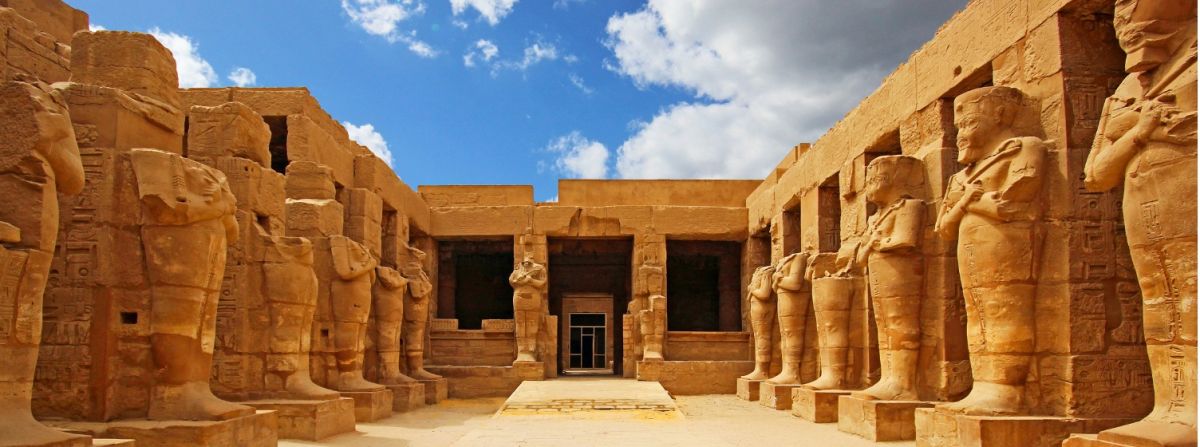
New Kingdom of Egypt (c. 1550–1070 BCE) was an era of unparalleled prosperity, during which some enormous temples and monuments were built in the honor of the gods, pharaohs, and the dead. The majority of these structures are still considered masterpieces of ancient Egyptian architecture. Some of the most renowned temples and monuments of the New Kingdom are as follows:
1. Temple of Karnak
Location: Thebes (modern Luxor)
Pharaohs Involved: Some of the New Kingdom pharaohs, particularly Seti I and Ramses II.
Description: The Karnak Temple Complex is Egypt's biggest and most opulent religious complex. It was consecrated to the deity Amun and expanded over a few centuries, particularly under the reign of Seti I and Ramses II. The temple was equipped with enormous pylons (entryways), enormous obelisks, enormous statues, and the famous Hypostyle Hall with 134 enormous columns. The complex was a central religious hub and a symbol of Egypt's power and wealth in the New Kingdom.
2. Temple of Abu Simbel
Location: Nubia, southern Egypt (by Lake Nasser)
Pharaoh: Ramses II
Description: The Temple of Abu Simbel consists of two rock-cut temples built by Ramses II. The larger temple features four enormous statues of the pharaoh seated at the entrance, each standing about 66 feet (20 meters) tall. The smaller temple was built to honor Ramses II’s queen, Nefertari, and is dedicated to the goddess Hathor. The temples were cut into the mountainside and are famous for their sun alignment, which illuminates the inner sanctuary twice a year, on February 22 and October 22. The temple complex was relocated during the 1960s in order to save it from being overwhelmed by the Aswan High Dam.
3. Temple of Hatshepsut (Deir el-Bahari)
Location: West bank of the Nile, near Thebes (modern Luxor)
Pharaoh: Hatshepsut
Description: The Mortuary Temple of Hatshepsut is among the most beautiful and distinctive buildings of ancient Egypt. It was constructed by Queen Hatshepsut, one of the only female pharaohs, and stands at Deir el-Bahari, a location on the west bank of the Nile. The temple consists of a series of terraces rising up the hillside, producing a dramatic architectural effect. It was consecrated to the gods, Amun among them, and served as a site for the cult of Hatshepsut following her death. It is famous for its symmetry, its size, and for its beautiful reliefs depicting the rule of Hatshepsut, including her famed expedition to Punt.
4. Temple of Luxor
Location: Thebes (modern Luxor)
Pharaohs Involved: Amenhotep III and Ramses II
Description: Luxor Temple was constructed primarily under Amenhotep III but was enlarged by Ramses II, who placed two colossal obelisks at the front (one is in Paris today). It was a temple honoring the god Amun, and it was where the annual Opet Festival was held, when the statue of Amun was moved from Karnak to Luxor. The temple is renowned for its impressive architecture, including the Colonnade of Amenhotep III, Pylon of Ramses II, and several giant statues of gods and pharaohs.
5. Temple of Medinet Habu
Location: West bank of the Nile, near Thebes (modern Luxor)
Pharaoh: Ramses III
Description: Ramses III built the Temple of Medinet Habu and is arguably the finest-preserved New Kingdom temple. It is dedicated to the god Amun and was also used for royal funeral rites. The temple is renowned for having walls with extensive reliefs of the military campaigns of Ramses III, specifically his wars against the Sea Peoples. The temple is in the classical Egyptian style, having a great pylon, hypostyle hall, and a sanctuary.
6. Temple of Karnak - Great Hypostyle Hall
Location: Karnak, Thebes (modern Luxor)
Pharaohs Involved: Seti I and Ramses II
Description: The Great Hypostyle Hall is the most impressive feature of the Karnak Temple Complex. It consists of 134 giant columns, 12 of which stand at 69 feet (21 meters) tall. The great hall was constructed during the reign of Seti I and completed by Ramses II. The columns are heavy with carvings and reliefs of gods and pharaohs, showcasing Egypt's riches and power during the New Kingdom era.
7. Temple of Edfu
Location: Edfu, between Luxor and Aswan
Pharaoh: Ptolemaic period (although the temple was built in the later part of the New Kingdom, the pharaohs' rule had already begun to decline)
Description: Despite being completed during the Ptolemaic period, the Temple of Edfu is a good example of ancient Egyptian temples architecture. Dedicated to the god Horus, the temple was constructed on the site where, according to Egyptian legend, Horus fought and killed the god Set. The temple boasts its well-preserved pylons, massive Sanctuary of Horus, and plenty of reliefs depicting the mythological battles between Horus and Set.
8. Temple of Abu Simbel
Where: Lake Nasser, southern Egypt (Nubia)
Pharaoh: Ramses II
Description: Egypt's most famous monuments are the Abu Simbel Temples, or Great Temple of Ramses II. The larger of the two temples has four colossal statues of Ramses II, each about 66 feet (20 meters) tall. The smaller temple is that of Ramses' queen, Nefertari, and is also richly decorated with carvings and statues of Ramses and Nefertari. The temples were relocated during the 1960s in order to prevent them from being washed out by the waters of the Aswan High Dam.
Conclusion
The New Kingdom was a time of monumental architecture, as pharaohs constructed massive temples to honor the gods, commemorate their reign, and ensure their immortality. The temples, such as those at Karnak, Abu Simbel, and Deir el-Bahari, not only bear witness to Egypt's power and wealth during this period, but they continue to evoke admiration for their architectural grandeur and their historical significance.
